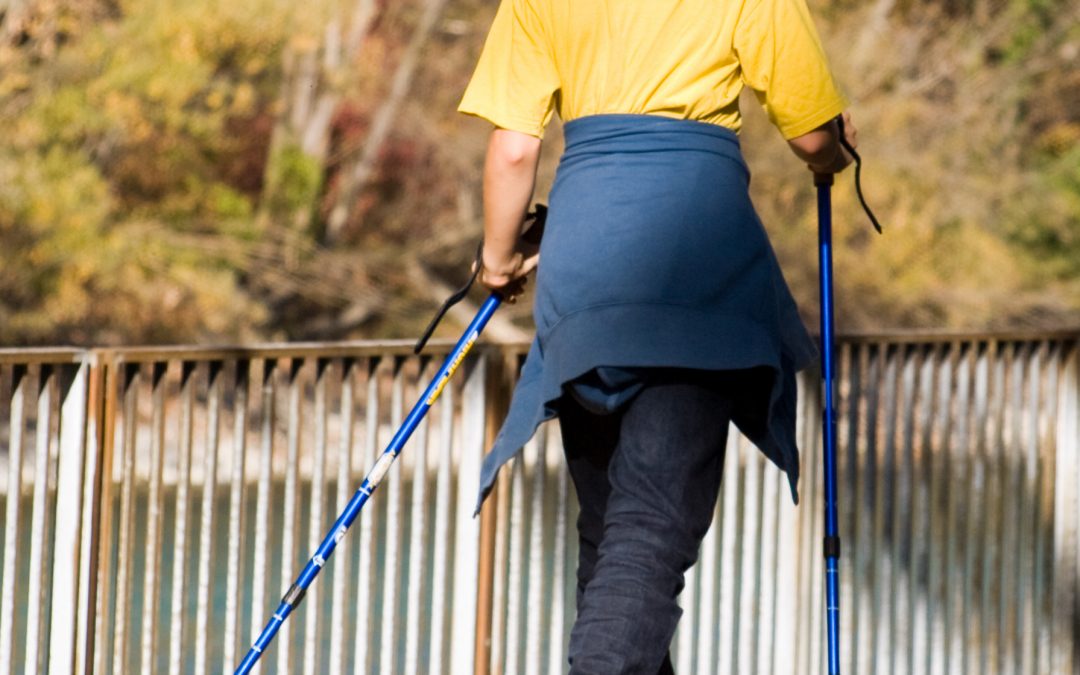No skis? Just poles?! – An overview of the benefits of pole walking
Nick Serafini, R.Kin, Upper Grand Family Health Team
You may have seen them out there and wondered why are they using just poles? But for those who are walking with poles, commonly referred to as ‘Nordic Walking’, they may be a step ahead in terms gaining more benefits while participating in their exercise. There has been many research articles over the years to support these benefits so let’s explore what they are!
The first benefit that we will explore is confidence. Yes, that’s correct. For many, the fear of falling can be more than enough to prevent them from doing any exercise at all! And without exercise, our overall health as well as our quality of life decreases. These two components are arguably the most vital to our longevity. Plus, a little can go a long way!
Next, we can actually increase the amount of energy that we are utilizing during our walk. Because we are now incorporating our upper body, this means that there are more moving parts, which increases the demand for energy to be used. Think about how much tougher it may have been to use an elliptical versus a treadmill barring any musculoskeletal issues or injuries. The use of poles actively engaged the upper body to propel the person forward during walking, resulting in higher activation of the upper body musculature, and it increases cardiovascular metabolism compared with walking without poles at the same walking speed.
So, regardless which speed you are travelling at or the terrain that you are on, there are marked improvements to our health. Studies have shown an increase in cardiovascular function (how well the heart and lungs work together) and benefıcial effects on several relevant parameters such as resting heart rate, blood pressure, exercise capacity, maximal oxygen consumption, and quality of life in a wide range of diseases.
Using poles can actually make your activities feel easier also. A research article showed that the use of poles in Nordic Walking increased physiological responses at a given speed but decreased the RPE (Rate of Perceived Exertion) in comparison with the normal walk uphill. Rate of Perceived Exertion is a commonly used scale to compare how you feel when exercising at any given time; the lower the number, the easier the activity feels. This can help you monitor your progress week to week, month to month.
In conclusion, there is research to define the additional benefits of using poles for walks. If you are going to spend the time to exercise, why not get the most out of it? There is an abundance of options out there covering a wide range of price points, so there is no reason not to get yourself (or gift) a pair! And with telescopic or collapsible poles, they can be easily stored away for spontaneous adventures. Finally, considering that the situation we are still in, why not take advantage of the beautiful landscapes our communities have to offer!
For more information about any of the free services offered by the Upper Grand Family Health Team, visit our website at www.uppergrandfht.org or call our office at 519-843-3947. Like us on Facebook (Upper Grand Family Health Team) and follow us on Instagram (@uppergrandfht) for healthy living tips and information on upcoming programs and events in the area!






